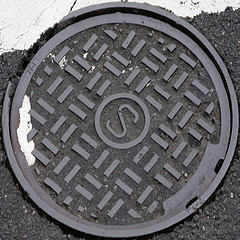Now that we’ve established that many organizations still seek and expect to receive a cover letter, it seemed a good time to add some cover letter tips to Keppie Careers’ blog!
What Is A Cover Letter? What’s the Point?
Like all job search correspondence, a cover letter is a sales pitch. It’s an introduction to your resume and should be interesting enough that the reader will want to read more about you!
Create a new, targeted cover letter for each position.
Often this letter is the first contact you have with a prospective employer. A neat, concise, well-written letter can entice the employer to read your resume with greater interest and improve your chances of getting an interview.
How Should Cover Letters Be Organized?
A lot of cover letter advice mentions breaking the letter into three parts: Introduction, Body, and Closing. I adapt this advice for cover letters and use the following format:
1. Opening Pitch. Why are you right for the job? Sell yourself here. Be sure to take your cues from the job description, which is (more often than not) highly detailed and involved. Take advantage of all the information available to you to craft a spot-on first sentence that will appeal to your readers. Your first paragraph should focus on what you have to offer relative to the employer’s needs. A good opening may be something along these lines: As a leader and manager, I develop, build and maintain strong relationships.
In the past, coaches encouraged job seekers to start their letters, “I saw your ad in X publication and am writing to apply for the position of ________.” You do need to state the position in which you have an interest, but this should not lead your letter. Of course you are applying for the job – so is everyone else! What makes you special or unique? THAT is how to lead your letter.
2. Highlights of Qualifications. The second section should hone in on the reasons you are perfect for this job. Research the organization beyond the job description to find links between their needs and your skills. If an organization makes a big deal about their values, feel free to use that information to inform your letter. Use bullet points to group your qualifications. I suggest choosing three headers and selecting no more than 3 bullet points for each header. You can use parts of your resume, but do not simply repeat your resume. You want to use the letter as a hook to interest the reader in learning more by reading your resume. For example: My work ethic and standards fit perfectly with X Company’s values of “Honesty, Integrity and Respect for People.” Some highlights: (List highlights as bullets under these headers.)
3. Call to action. Make a point to let the reader know what you want – an interview:
I hope you agree that my extensive experience in project management and well developed written communication skills are solid matches for X Company. I look forward to putting my ideas, enthusiasm and energy to work for your team and will contact you the week of ____________ to discuss the many links between your needs and my skills.
You must follow-up as indicated. Mark your calendar appropriately.
Read more about cover letters from Keppie Careers:
Don’t Skip the Cover Letter
Cover Letter Inspiration
Mo’ Cover Letter Tips
Need a great cover letter? Don’t take a chance on sending out something that doesn’t represent you well. Keppie Careers is here for you! www.keppiecareers.com
Photo by Leo Reynolds



